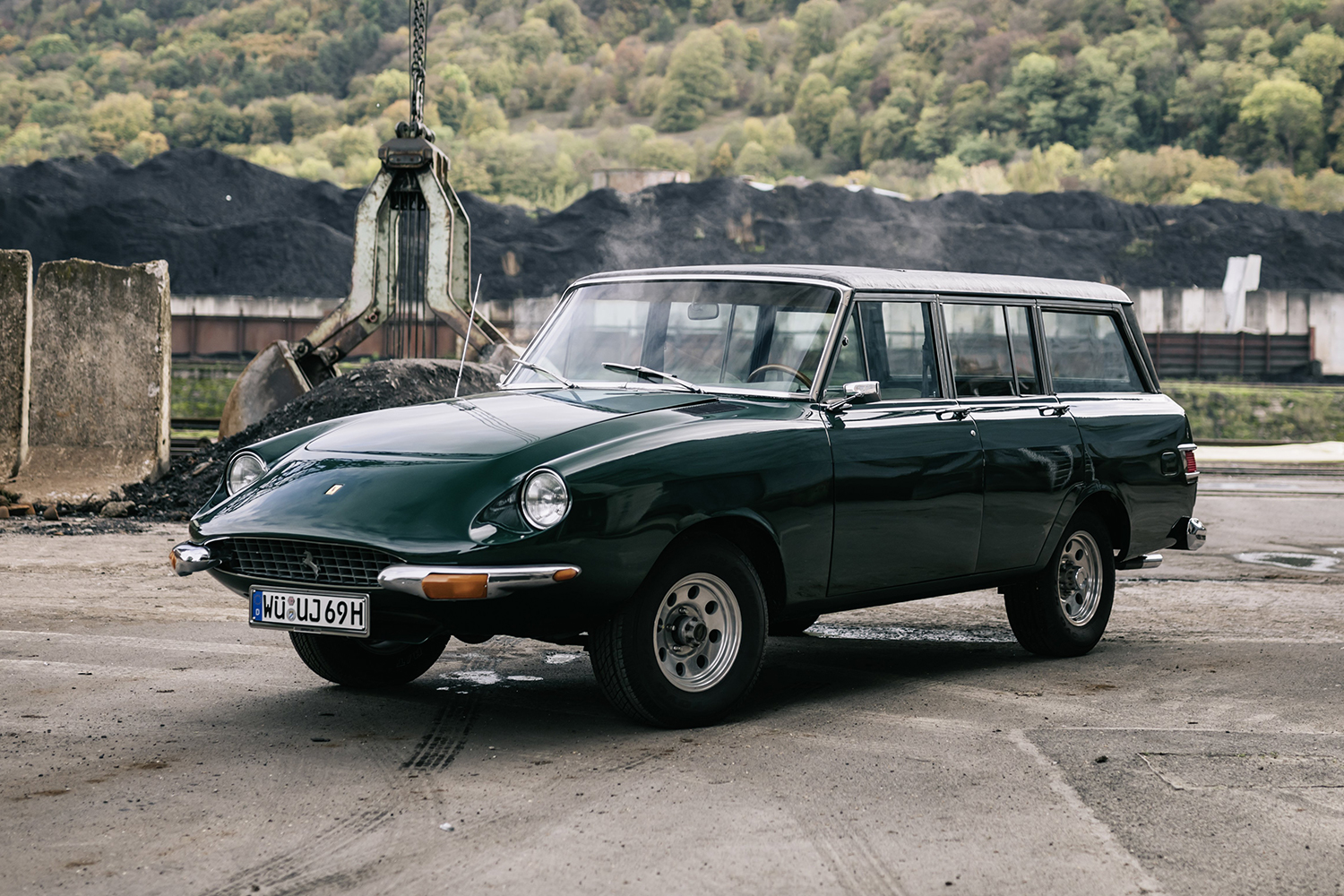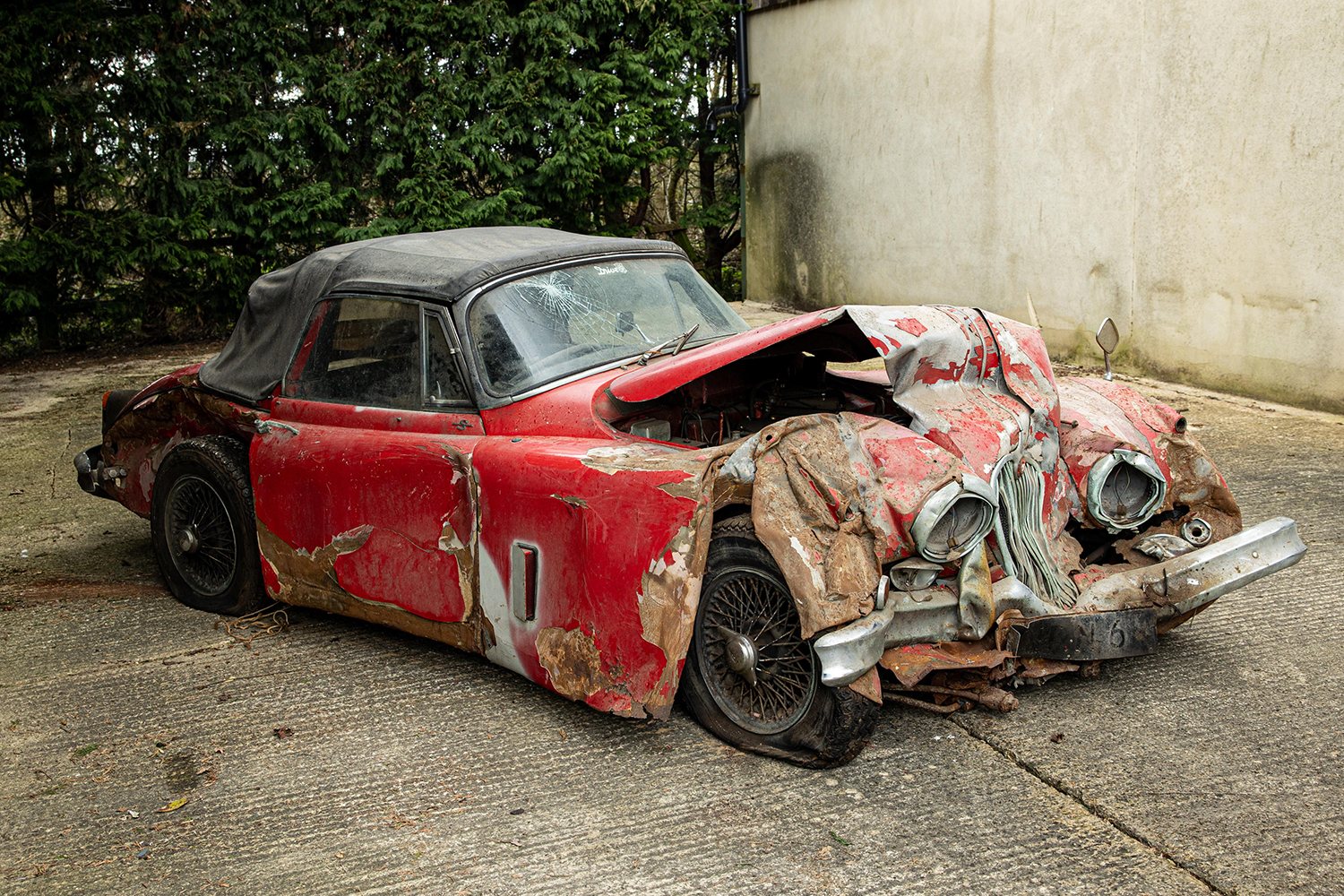The Bronco, the Testarossa, the Defender, the Countach — these are all great car names. They’re evocative, they’re fun to say, they’ve transcended the marketing department and even, to an extent, the vehicles themselves. Still, none of them quite match the vigor of the Stutz Bearcat.
Never heard of it? That’s no surprise, as it was one of America’s first sports cars, its heyday no less than a century ago in the 1910s and ‘20s. But while the general public has managed to forget the Brass Era’s mammalian hybrid, Jay Leno certainly hasn’t. Not only did the comedian and gearhead care about the Gatsby-era Roadster enough to add one to his collection, but he’s restored his 1918 model multiple times in order to get the details right, calling it “one of the sexiest cars of the period.”
Now, an even more impressive specimen than Leno’s obsessively restored baby is headed to auction: a 1914 Stutz 4E Bearcat, which will be offered by Gooding & Company during its sale at the Pebble Beach Concours d’Elegance on August 13 and 14. The auction house is billing it as “the holy grail of American antiques,” but you don’t have to take their word for it; the list of discerning previous owners should suffice in that regard.
First, there was Thomas Ives Hare Powel who purchased the car, chassis 2250, in April 1914. Powel was a descendant of Nicholas Brown, a founder of Brown University. After changing hands a few times, it was sold in 1965 to Winthrop Rockefeller, the son of John D. Rockefeller, Jr., who would go on to serve as governor of Arkansas. Subsequently, it was purchased by casino magnate William F. Harrah, who was such an automotive junkie that his enormous collection, which at one time included a half-Jeep, half-Ferrari hybrid, filled its own museum. Now, a private collector who has owned it since 2006 is ready to pass it on to another obsessive.
The reason vehicles like this are a subject of fascination for the über-wealthy could certainly be chalked up to the thrill, rarity and prohibitive price point. When you’ve got more money than you know what to do with and have driven the fastest modern sports cars on the market, bombing around a track in a nostalgia-fueled tin can may be the only thing that makes you feel alive. But with the Stutz Bearcat, this isn’t just any Brass Era death machine — it’s a legend in the racing world, though the monocle windshield and what appear to be wagon wheels may not make that immediately apparent.

The legend of the Bearcat goes like this: After working for various companies in the fledgling automotive industry, Ohioan Harry Stutz started his own outfit, the Stutz Auto Parts Company, in 1910. As the name suggests, he was originally focused on producing components, but when word spread about a new 500-mile race, Stutz wanted in. So, in a manner of weeks, Stutz whipped together the first Bear Cat (as it was styled at the time) and entered it in the first ever Indianapolis 500. It miraculously finished in 11th place, beating out competitors with much more experience.
The production Bearcat came to be known as “The Car That Made Good in a Day,” and while that legend-making performance didn’t help Stutz build a lasting American automaker (the original Bearcat fizzled out in the early ‘20s and Stutz died in 1930), it did propel the vehicle into the climate-controlled halls of collector stardom.
If you’d like to see what a Stutz is made of, this particular model is expected to sell somewhere in the ballpark of $2,750,000 and $3,500,000. Despite the price tag, Gooding & Company notes that the previous owner was known to “exercise” it a few times a year.
Even if you’re not interested in picking this up yourself, if you do find yourself at Pebble Beach this August, it’d be worth attending the auction to see what notable names will be eyeing this well-preserved legend.
This article was featured in the InsideHook newsletter. Sign up now.


















